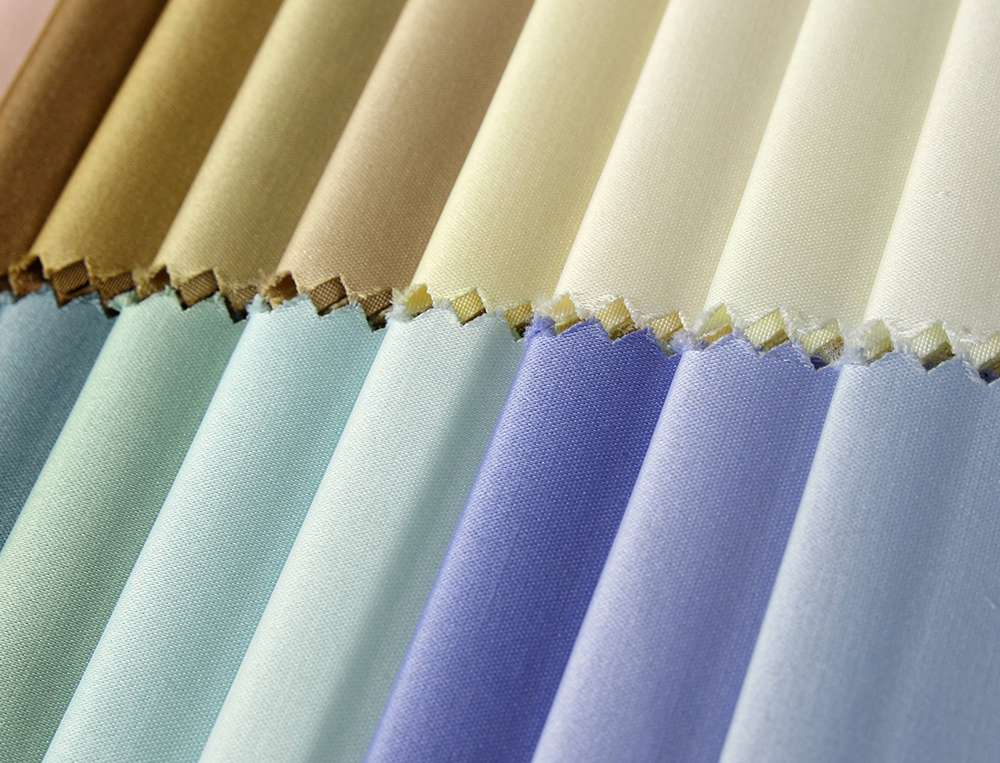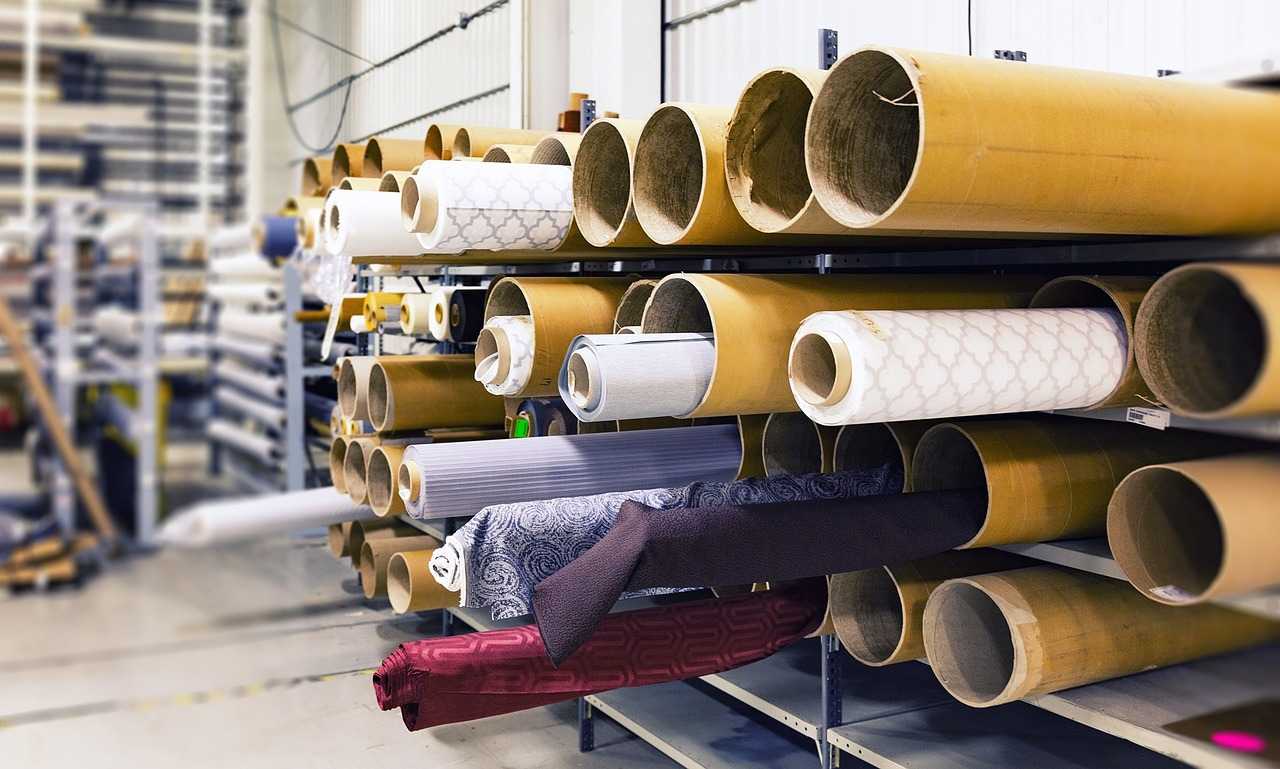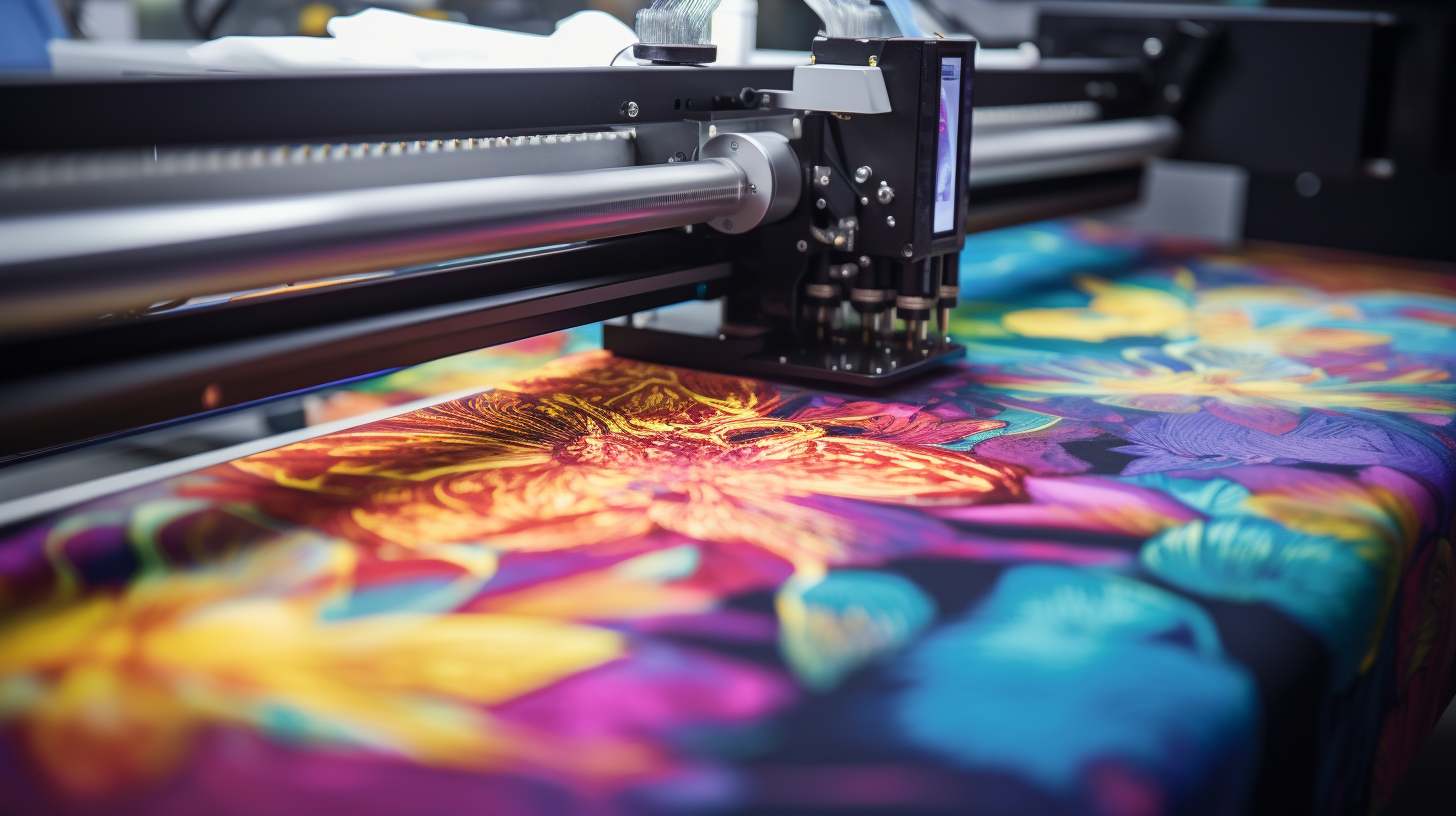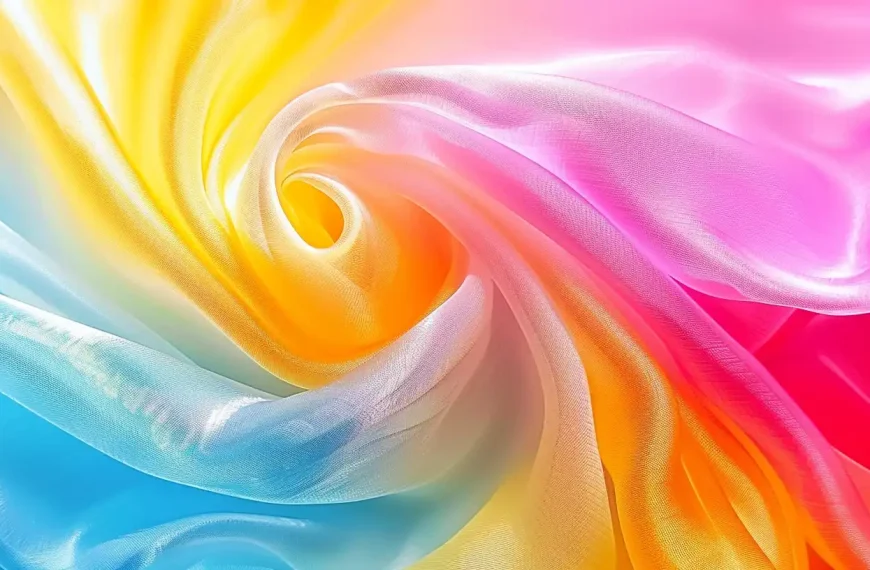Looking for a fabric that is not only luxurious and comfortable but also sustainable and friendly? Look no further than modal fabric! But what is modal fabric? Today, this blog post will reveal everything about this type of fabric to you!
So, if you’re looking for a fabric that combines comfort, style, and sustainability, modal is the way to go! Join the movement towards eco-friendly fashion and experience the luxury of modal fabric for yourself.
What is Modal Fabric?

Modal fabric is made from beech tree pulp. It falls under the category of rayon, which are fabrics infused with other substances to enhance their properties.
The end product has exceptional durability and flexibility, which separates it from other types of rayon fabric. Additionally, modal material radiates luxury due to its soft texture and higher cost.
Apart from clothing like underwear, pajamas, activewear, T-shirts, etc., you may also find this versatile fabric in household items such as bed sheets and towels. This extensive use can be attributed not only to its aesthetic appeal but also to the fact that it hails from regenerative plants. This makes it a great choice in comparison to many other synthetic textiles.
How is Modal Fabric Made?

Creating modal fabric involves a detailed process that begins with harvested beech trees. Here is the basic sequence of how manufacturers transform wood pulp into this luxurious textile:
- Transform the pulp from beech trees into semi-synthetic fabric using chemicals.
- Use chemicals such as sodium hydroxide and carbon disulfate to break down the structure of the wood fibers during soaking.
- This soaking converts the pulp into a thick, viscous liquid known as sodium cellulose xanthate.
- This liquid is then pushed through a spinneret, transforming it into fibers.
- Solidify these fibers in an acid bath, resulting in flexible and durable fabric.
- The material goes through yarn formation and dyeing before being woven or knitted into modal fabric.
The Modal Fabric Properties
Modal fabric exhibits several desirable properties. It is very soft to the touch, providing a luxurious feel to garments. Known for its breathability, modal keeps you cool by allowing air circulation.
It’s very durable and doesn’t lose its shape or color after being washed a lot or used for a long time. Modal also doesn’t shrink as much as some other fabrics, so clothes that are washed in it stay the same size.
At last, it holds dye very well for lasting color vibrancy even with repeated wear and washes.
Softness
The luxurious texture of modal fabric stems from its exceptional softness. This incomparable quality, like that of silky materials, gives clothing made from modal a distinct advantage.
Its inherent softness remains consistent over time, even after numerous wash and wear cycles.
Garments are not the only beneficiaries of this plush feel. The soft touch also extends to household items like bed sheets and towels made from modal fabric. Thus enhancing their comfort factor for users.
Because it lasts a long time, this material is great for underwear, pajamas, and other private clothing. It’s also great for exercise, like yoga pants or bike shorts, because it’s very comfortable.
Breathability
Modal fabric is famous for its breathability, which provides exceptional comfort. Compared to conventional cotton, modal allows air to circulate freely. This makes it a good material for activewear and sportswear like yoga pants and T-shirts.
This feature of the cloth keeps you cool by letting hot air out of your body, which makes wearing it more enjoyable. This good quality is helped by the fact that modal comes naturally from cut-down beech trees.
Plus, because it doesn’t stretch, modal keeps air flowing even when it’s tangled or twisted. This is another reason why it’s loved in the fashion world!
Durability
Modal fabric stands out in the world of textiles due to its superior durability. It’s more robust and flexible than typical rayon. This makes it a popular choice for clothing items that must endure frequent washes or high wear.
Beyond its strength, this versatile fabric resists pilling and wrinkling, no matter how many times you use or wash it. Because it is so durable, modal is great for everyday use.
That’s why using modal fabric will make sure that your favorite pajamas or bed sheets last a long time without sacrificing comfort or style.
Shrink Resistance
Modal fabric stands out for its shrink resistance. Unlike many other materials, it retains its shape and size even after several washing cycles. This key attribute is due to the tight weave and lengthy fibers used in modal production.
You can rely on your modal garments to fit consistently over time. This property makes them a practical choice for items that undergo regular wear and frequent laundering.
The worry of shrinking clothes becomes a thing of the past with this durable and resilient material in your wardrobe.
Color Retention
Modal fabric is hailed for its superior color retention. Even after frequent washing and exposure to sunlight, it maintains its vibrant hues without fading or bleeding. This robust feature ensures that items made from this luxurious textile always appear new.
The semi-synthetic fabric’s ability to hold onto colors extends the life of your clothes. You’ll notice that even with extended use, the modal material stays bright and colorfast.
This strength makes modal a preferred choice in the fashion industry. You can use modal to produce appealing garments with lasting quality.
Is Modal Fabric Sustainable and Environmentally Friendly?
When discussing the sustainability of modal fabric, it’s essential to consider both sides. On the one hand, it is derived from renewable beech trees and is biodegradable. On the other hand, its production can lead to forest destruction and involve harmful chemicals.
But some companies are working towards more eco-friendly alternatives with fewer carbon emissions and water consumption. All these make it a lower-impact alternative compared to traditional viscose or rayon.
Forest Destruction
Despite modal fabric’s eco-friendly reputation, its production can lead to forest destruction. Manufacturers often harvest beech trees for the pulp used in creating this semi-synthetic fabric.
These trees are a renewable resource and require less water than other textile plants. However improper or excessive harvesting may cause serious damage to forests. So we need sustainable alternatives, such as TENCEL Modal.
This approach minimizes environmental impact. And it also helps maintain the balance of our world’s forested areas.
Chemical Usage
In the production of modal fabric, there is the involvement of various chemicals. Sodium hydroxide and carbon disulfate are used to turn the beech tree pulp into usable fiber. The solvent spinning process that aids in modal fabric creation relies extensively on these chemicals.
Despite being a semi-synthetic material, this chemical raises questions about its environmental impact. Processes similar to this can also be found with other fabrics, like Lyocell. But it employs a closed-loop solvent system using non-toxic cellulose solvents, making it somewhat more eco-friendly.
This contrast underlines how crucial chemical usage is in determining the sustainability of different fabrics.
Sustainable Alternative
Modal shines as a sustainable fabric in the world of textiles. Made from beech tree pulp, this biodegradable material uses far less water during its growth than other plant sources conventionally used for textile production.
Its semi-synthetic nature strikes a healthy balance, preserving our natural resources while catering to the demand for durable and luxurious materials.
Its strength and longevity further increase its environmental appeal. Since modal fiber can withstand extensive use without losing its quality, it reduces the need for frequent replacements, which contributes to waste generation.
Less replacement means less production, which leads to lower carbon emissions over time. The fact that modal absorbs 50% more water than cotton means that it doesn’t need any extra coatings or processes to do that, which is good for the environment.
Modal Fabric vs. Other Fabrics
Dive into the intriguing world of fabric comparison as we pit modal against viscose, lyocell, and cotton. Each fabric has its own unique strengths and weaknesses. Uncover why modal is increasingly preferred for activewear, sportswear, and luxury clothing items in our comprehensive analysis.
Is modal indeed superior? Read on to discover more!
Modal vs. Viscose
Both modal and viscose fabrics originate from plants, yet they possess distinct differences. Modal stands out for its durability, flexibility, and higher absorbency rate compared to classic viscose. It’s a form of high-modulus rayon that maintains strength even when wet.
On the other hand, conventional viscose loses strength in moist conditions, which can lead to stretching or sagging over time.
Yet both share attractive properties, such as breathability, making them suitable for sports clothing and comfortable everyday wear. In terms of sustainability too, modal surpasses standard viscose. It requires less land, water, and chemicals.
Modal vs. Lyocell
Modal and Lyocell are two popular types of semi-synthetic fabrics widely used in the fashion industry. Modal, derived from beech tree pulp, boasts a reputation for its exceptional softness and breathability. It often blends well with other fibers, like cotton and spandex, to increase durability and flexibility.
On the other hand, Lyocell stands out for its smooth, silk-like texture that’s usually preferred as a standalone material rather than blended. Made from wood pulp, it shows off similar moisture-wicking properties, just like modal. This makes both materials great choices for sportswear or any garments regularly exposed to water or sweat.
While comparisons do exist between them, each kind of fabric retains unique characteristics, making them distinct in their own way.
Modal vs. Cotton
Compared to traditional cotton, modal fabric offers several distinct advantages. It requires less water and chemicals during processing, making it a more eco-friendly choice. Known for its breathability and moisture-wicking abilities, modal can keep you cool and dry, unlike cotton, which tends to absorb moisture.
Modal also presents superior durability over cotton. It maintains its shape much longer and is resistant to shrinkage even after multiple washes. Furthermore, the softness of modal doesn’t fade with time, unlike the rough texture of cotton that appears after repeated washing.
These features make Modal an attractive alternative in the textile industry.
The Future of Modal: Recent Innovations
Modern innovations in modal production are pushing the textile industry into a new era. State-of-the-art scientific advancements are driving a shift towards more eco-friendly manufacturing methods too. Many brands are now integrating recycled or bio-based materials into their modal fabrics to reduce their environmental impact further.
Given these strides in sustainable practices, it’s clear that the future of modal holds promising developments for both consumers seeking quality textiles and those committed to preserving our planet’s resources.
Conclusion
Modal fabric brings together luxury and sustainability in the textile industry. With its eco-friendly production process, this semi-synthetic fabric creates a new standard. Its unique properties make it ideal for various applications, promising an innovative future in sustainable fashion and household items.
Modal material truly represents a stride towards responsible and stylish living.
FAQs
1. What is modal fabric?
Modal cloth is made from the recovered cellulose of woody trees like oak and birch. It is breathable, stretchy, and absorbs water. It’s an organic type of cotton that doesn’t shrink or wrinkle easily and flows well.
2. How is modal made?
To make it, chemicals like caustic soda and sulfuric acid are used to turn the cellulose into a fabric that can be woven.
3. Is modal fabric sustainable?
Yes, many see modal as one of the more eco-friendly fabrics because it uses less water in its production than cotton does. Its global certification system also ensures transparent production processes.
4. Why choose modal over other fabrics?
Modal is unique because it breathes well, keeps heat in, resists wrinkles, stays true to color, doesn’t pill or bubble, and has a luxury feel similar to silk but easier to care for.
5. Can denim be made from modal?
Definitely! The denim industry has embraced modal blending with traditional yarns for indigo technology applications. Because it retains color well while making clothes more comfortable due to increased elasticity.
6. How do you care for clothes made from Modal?
For the best results when caring for your items made with this material, follow the above “Tips on Caring for Modal Material”.
Learn more fabric knowledge on Longan Craft Blog! Dive into the fabric world with Longancraft!







